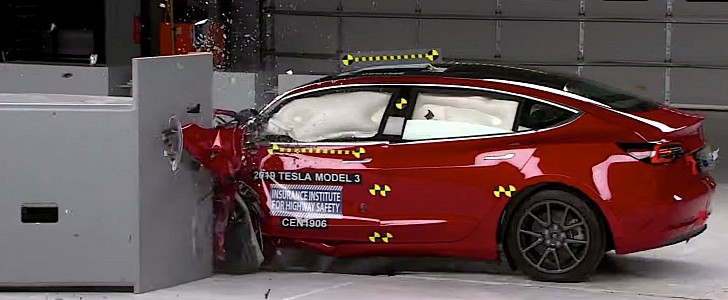When Tesla removed radar from the Model 3 and Model Y, IIHS and Consumer Reports respectively removed the sedan from their Top Safety Pick+ and Top Pick status (the Model Y does not have them yet). At the time, the own automaker informed that “cars with Tesla Vision” might be delivered “with some features temporarily limited or inactive.” Consumer Reports could only recommend the car again after proper testing, and IIHS just did that. The tests considered Tesla Vision equivalent to the radar system the vehicle now lacks.
To be more precise, IIHS determined that the radar-based system was better at avoiding crashes with adult-sized dummies. In contrast, Tesla Vision avoided hitting child-based dummies in the same situations with more prowess. IIHS granted it “advanced” rating in reducing speed in crashes involving pedestrians and a “superior” rating in avoiding collisions with other cars at 12 mph and 25 mph.
Consumer Reports needs either IIHS or NHTSA to consider a car a Top Pick. These entities determine if vehicles have FCW (forward collision warning) and AEB (automatic emergency braking) with pedestrian detection. Without those features as standard, the organization cannot recommend a vehicle.
When Tesla removed the radar from its vehicles, NHTSA said the Model 3 built on or after April 27, 2021, lacked FCW, LDW (lane departure warning), and crash imminent braking and dynamic brake support in AEB. The Model 3 with Tesla vision also lost its IIHS Top Safety Pick+ around the same time.
Although it may seem that the tests validated Tesla Vision, they are made in conditions in which cameras have no downsides. If they were performed in foggy weather or any other situation in which redundancy would be welcome, the results would probably not be the same.
As neutral entities, IIHS, NHTSA, and Consumer Reports must apply the same tests to all vehicles. Yet, Tesla Vision will probably demand that these evaluations are expanded not to grant a safety award for systems with a higher probability of failing depending on weather conditions. That’s the main criticism Tesla Vision has received so far, and we are yet to see a test to prove it will work as well as one based on radar. Hopefully, one of these safety entities will soon perform them.
Consumer Reports needs either IIHS or NHTSA to consider a car a Top Pick. These entities determine if vehicles have FCW (forward collision warning) and AEB (automatic emergency braking) with pedestrian detection. Without those features as standard, the organization cannot recommend a vehicle.
When Tesla removed the radar from its vehicles, NHTSA said the Model 3 built on or after April 27, 2021, lacked FCW, LDW (lane departure warning), and crash imminent braking and dynamic brake support in AEB. The Model 3 with Tesla vision also lost its IIHS Top Safety Pick+ around the same time.
Although it may seem that the tests validated Tesla Vision, they are made in conditions in which cameras have no downsides. If they were performed in foggy weather or any other situation in which redundancy would be welcome, the results would probably not be the same.
As neutral entities, IIHS, NHTSA, and Consumer Reports must apply the same tests to all vehicles. Yet, Tesla Vision will probably demand that these evaluations are expanded not to grant a safety award for systems with a higher probability of failing depending on weather conditions. That’s the main criticism Tesla Vision has received so far, and we are yet to see a test to prove it will work as well as one based on radar. Hopefully, one of these safety entities will soon perform them.







